There is no first-timer’s stay in Jordan that is complete without a visit to the Lost City of Petra! This great ancient site, one of Seven Wonders of the Modern World, is half-hidden beneath the sand and rocky landscapes of Jordan… Though what is not buried is a sight that is without a doubt worthy of its Unesco status.
Go and see it for yourself!
Many tribes and cultures have camped in the caves of Petra over the centuries. Today, visitors are welcomed by the local Bedouins who defend the area as their home with the convenience of the nearby town, Wadi Musa.
Table of Contents
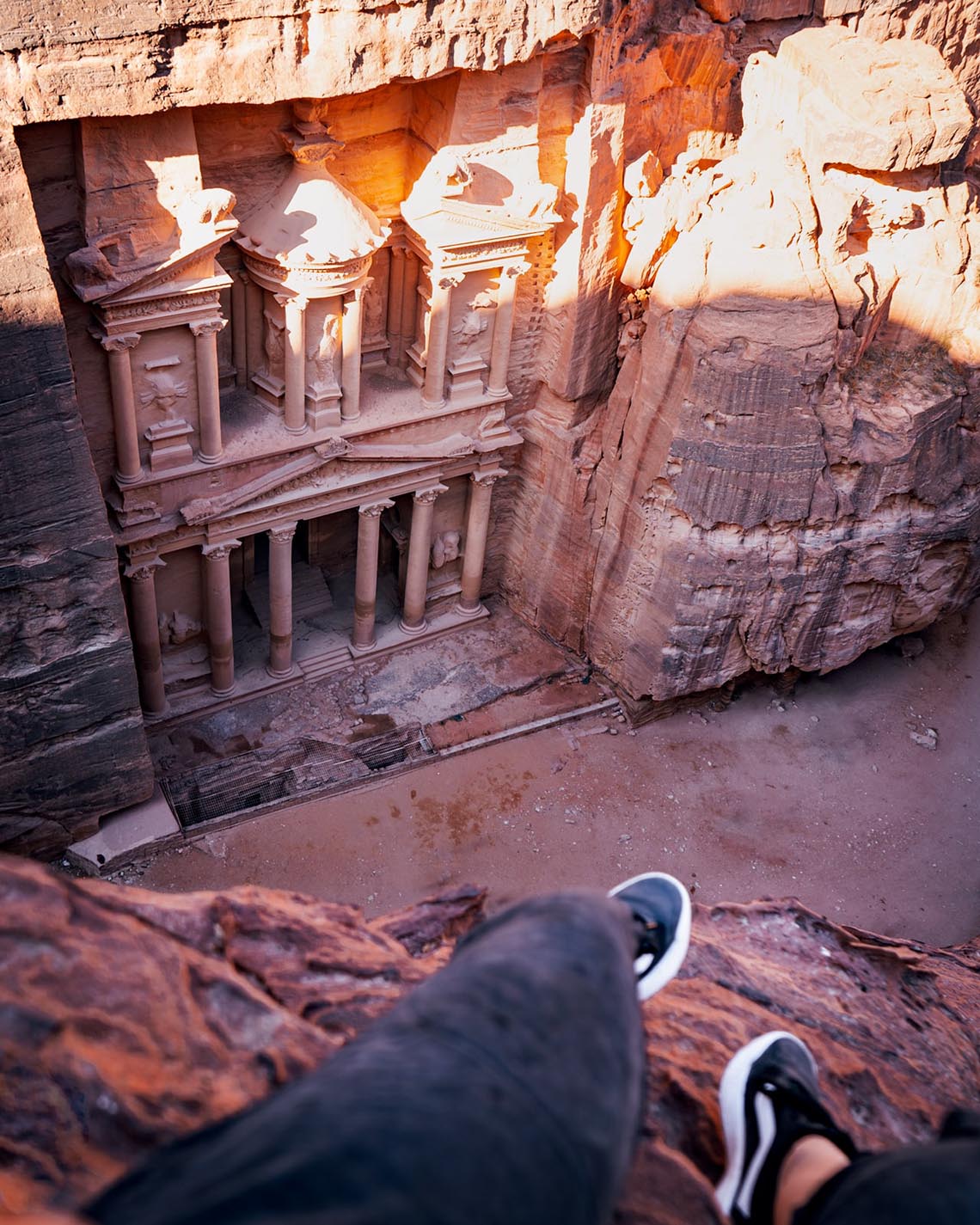
The Best Way to Visit Petra
The many viewpoints, trails and sights to see in Petra can be overwhelming. This complete guide aims to act as your simplified blueprint in order for you to navigate your time-sensitive stay.
Don’t worry, we will not let you miss the best bits!
Planning Your Petra Itinerary
The most common method of entry into Petra is the Jordan Pass. There are three ticket types:
Jordan Wanderer: This ticket includes a 1-day pass to visit Petra. It costs 70 JD (99 USD).
Jordan Explorer: This ticket allows for 2 consecutive visit days to Petra. It costs 75 JD (106 USD).
Jordan Expert: This ticket allows for 3 consecutive days to visit Petra. It costs 80 JD (113 USD).
The Jordan Wanderer ticket may be sufficient for those in a time crunch. But in my opinion, the Jordan Explorer is the best option. This will allow you to tackle the sprawling wonderland in your own time, whilst having a second day to hit those areas you missed. Additionally, the Jordan Explorer will also grant you enough time to enjoy two sunsets, two sunrises and a return trip to see ‘Petra By Night’.
The Ancient City of Petra and its various trails are dispersed across one main route that travels from the visitor centre at Wadi Musa, up the valley, to the Monastery. What you will see and experience in Petra depends greatly on your available time and stamina to hike a number of trails.
What to See in Petra
The following sights are those you should definitely make the effort to see. They are in the order of which you are likely to come across them (unless you enter Petra via The Back Route).
Al-Siq
The Siq is a narrow canyon that naturally guides visitors to the heart of Petra. It measures 160 metres in length, 3-12 metres in width and reaches up to 80 metres in height. It begins at a local souvenir shop with Porta-Potties and ends at the all-famous Treasury. There’s no way you will miss this as the Al-Siq is the main pathway for everybody.
Treasury
Al-Khazneh, or more famously known as the Treasury, is the most popular point of interest to see in Petra. As it is one of the first main structures along the main route through Petra; it is also the busiest. In addition, it’s also one of the most impressive… So in other words… This one is unmissable!
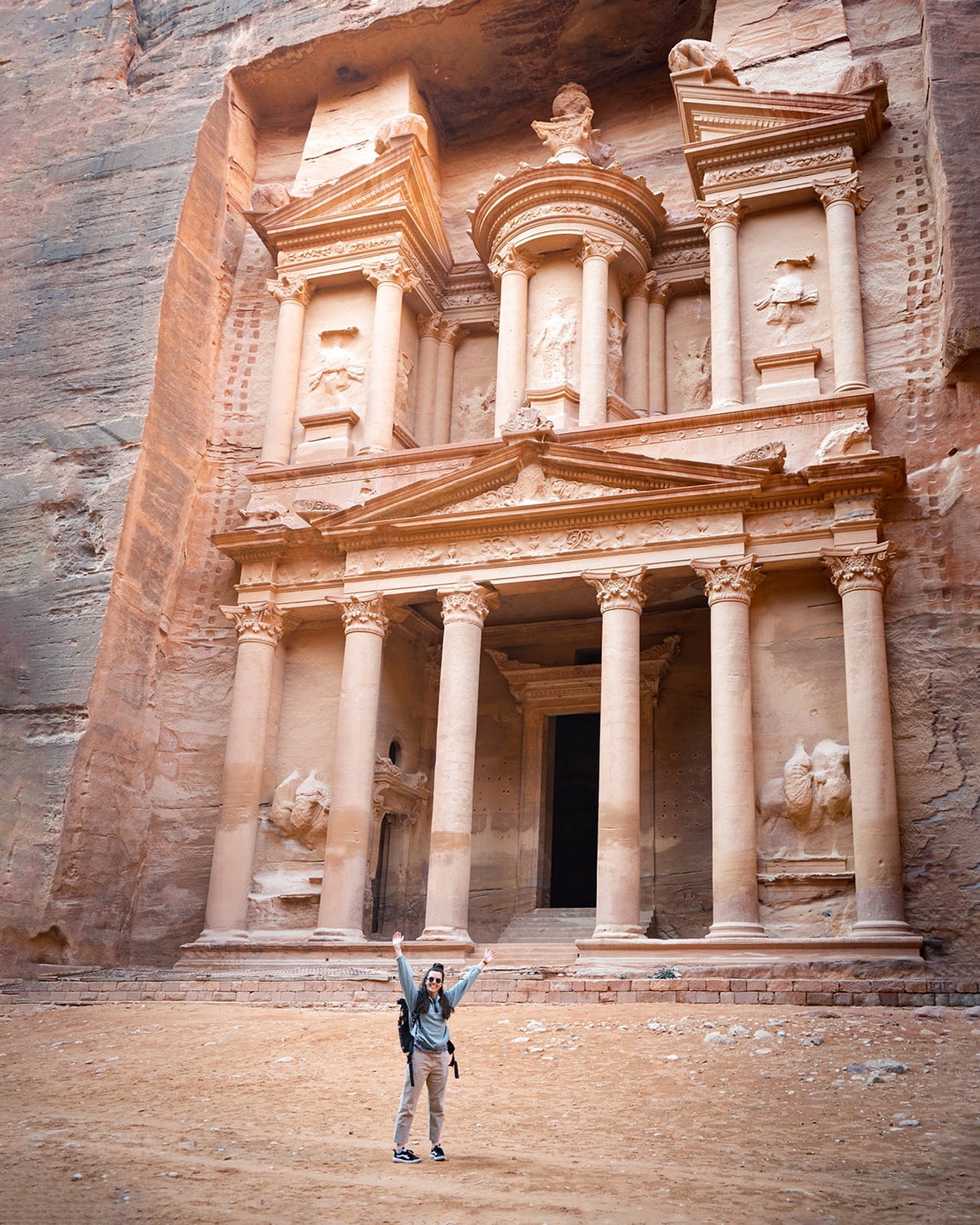
There are many vantage points to admire the Treasury from. This will become apparent as you leave the al-Siq and approach the Treasury to be bombarded by many local bedouins who will bargain with tourists to have them as their guide to these ‘secret’ locations.
Theatre
Petra’s Theatre is situated near the city centre along the main flat stretch between the Treasury and the Tombs.
Tombs
Petra has more than a thousand known tombs carved into the rocky terrain. The most elaborate are those that surround and look over the city centre.
High Place of Sacrifice
The High Place of Sacrifice is marked on Petra’s official tourist map as a trail that a guide is required, though it can also be described as the most accessible of Petra’s higher vantage points. At 170 metres high on top of Jebel Madbah Mountain, the hike has been estimated to take 3.5 to 4 hours to cover approximately 3 kilometres (1.9 miles). It’s vaguely sign-posted. So, take the guidance of a local bedouin guide if you are not a confident hiker or if you do not appreciate feeling even vaguely lost in the Lost City.
This Petra landmark was mainly used just as the name describes, for the sacrifice of animals to the Nabatean God Dushara. Though if this doesn’t sound appealing to you, perhaps the monumental views of a huge portion of the City of Petra will entice you to take the climb.
Monastery (Ad-Deir)
Secluded high in the hills, the Monastery is one of the grandest monuments of Petra. In fact, it rivals the popular Treasury as they are both similar in design.

You are going to need plenty of energy to tackle this one!…
Petra’s Tourism Authority has advised that this trail is a hard level of difficulty, taking close to 2.5 to 3 hours to accomplish. The route is only 2.5 kilometres long (1.6 miles) but most of this time will be spent sweating out the heat as you clamber up the many well-trodden steps.
Sadly, a proportion of those who wish to make the journey does so on the back of a camel, mule or donkey. Please take into account the discomfort of these animals; you are only diminishing the rewarding view by not enduring the hardships of the climb yourself.
The Back Route
It quickly became apparent during our visit to Petra that there was one route that was deemed as the ‘best way to see Petra’, especially by the local tour guides and bedouins. This is for the curious traveller; those who prefer to hike a little extra in order to see even more without the crowds.
This trail begins at Little Petra, though make sure to have already acquired your ticket from the main ticket office before making your way there. It will be easy enough to find a taxi driver who will drive you between the two.
Walk towards Petra from Little Petra by entering via the Monastery. This route can be followed using Maps.Me. From the Monastery, take your time to admire each structure whilst walking back down the hill to the Treasury.
But why should you visit Petra via the Back Route? This unbeaten path leads you to one of the most significant points in Petra… And that’s only after you’ve witnessed some of the most jaw-dropping landscapes within Jordan along the way. From the Monestry, you’ll realise that the alternative route up was via a gruelling staircase between crowds of lazy tourists on mules and in-your-face shop keepers. More so, the returning journey passes most of Petra’s ancient city’s tombs, temples and caves which will mainly be facing towards you as you walk towards them.
There will be local bedouins selling refreshments en route. Though it would be wise to bring your own essentials such as sun cream, water and hiking shoes. A scarf will also be necessary to cover your skin as the scorching elements of the desert toughen throughout the day.
See Also: Iraqi Kurdistan Travel Guide (What To Know Before Going)
Is It Safe to Visit Petra Jordan?
Absolutely! Jordan is a very popular tourist destination, and you certainly will not be alone. You’ll notice a light presence of guards within the confines of Petra. They are there to ensure that guests have a trouble-free visit. Honestly, if you are like me, then the biggest threat that you are ought to experience would be dehydration, sunburn or heat exhaustion. It’s easy to forget that you are walking miles and miles in a desert.
How Much Time is Needed to Visit Petra?
Do not underestimate how much there is to do and see in Petra! Even if you are not one for lingering too long, Petra has soo much to explore whether it be within the crowds or on your own hike away from the main areas. At the very minimum, a full day is required to see a good amount of Petra. The town of Wadi Musa is a convenient location to spend the evening between days of exploration. By doing so, you’ll also allow yourself the time to experience Petra during sunset and sunrise.
How Much Does It Cost to Visit Petra Jordan?
The following figures were last updated in December 2021.
If you are travelling with a Jordan Pass, then the entrance fee is included within the initial price that has been outlined above. Once you arrive at the Petra Visitor Centre you will need to show your pass to the ticket office to obtain a Petra ticket for entrance.
A one-day entrance fee to Petra without a Jordan Pass is 50JD (70 USD). Though a two-day ticket is recommended which would cost 55 JD (78 USD).
When is the Best Time to Visit Petra?
Talking from having had the experience of Petra in November, I would advise everyone to avoid visiting during the summer months if possible. You shouldn’t forget that Petra is a desert; the place is dry and can be very hot. My poor Scottish skin can vouch for this.
On another note, the winter can turn colder than you’d think!
April to May then September to November would be the best time to enjoy Petra with pleasant temperatures.
How Did I Visit Petra?
By sharing a detailed account of my own time in Petra, I hope that it will enable you to gauge a better understanding of what is realistically possible during your stay.
For the entirety of my time in Wadi Musa, I stayed in the Nomad Hostel. The staff were friendly, the place is fun and they have a rooftop terrace overlooking Petra.
Day One (Monday, 22nd November 2021)
After showing our Jordan Passes at the ticket office, we were given official tickets that would allow us to pass the turntable entrance.
Al-Siq
It was around 07:30 am when we were walking through the Al-Siq. At this time, there were very few tourists. The majority of people were the local bedouins making their way to the entrance to offer visitors their knowledge as a guide. Some parts of Al-Siq were completely empty which often gave us the illusion that we had the canyon to ourselves.
The Treasury
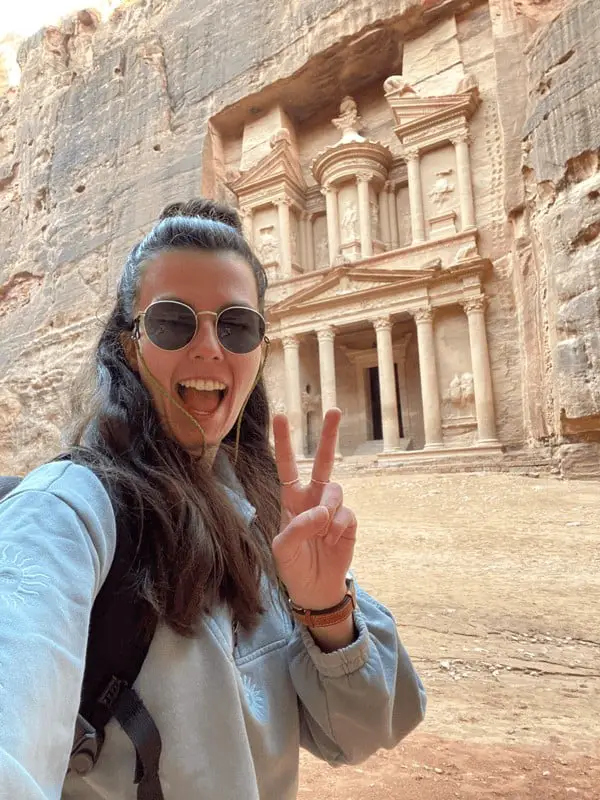
The Treasury was almost completely deserted upon our arrival. This was after sunrise at approximately 08:00 am.
In general, it seemed that the local people were more occupied in either prepping their animals or setting up their shops. Although we were offered about a hundred times whether we wanted to be taken to the famous viewpoint of the Treasury for amazing photos.
Thereafter, it took another twenty minutes to casually walk along the Main Trail to the beginning of the tombs (Al-Khubtha Trail). then a further hour to climb to the Monestry.
The Monestry
During these early hours of the morning, the Ad-Deir Trail to the Monestry is almost derelict. This stillness encouraged us to continue to the top before any crowds arrived. Whether you walk the same route or arrive via the Back Route, I’d recommend that you also try to visit Petra as early as possible. The entire Lost City has a completely different atmosphere if you are lucky enough to experience it without many others.
Once we had time to enjoy our surroundings, we returned to the Visitor Centre before the sun defeated us. All-in-all, our first day in Petra amounted to approximately 25,000 to 30,000 steps. So you could say that we were ready to call it a day!
We had left Petra before 2 pm for a much-needed, and shaded, sit-down meal in Wadi Musa.
Day Two (Tuesday, 23rd November 2021)
Thankfully, we had our paid second day in Petra with our pre-purchased Jordan Pass.
Our curiosity lead us to a local tour guide who was eager to show us some unmarked trails. This guide, like many others, approached us along the first stretch of the Main Trail before Al-Siq. We’d negotiated a price before setting off up into the rocky canyons away from any other tourist. It is advised that tourists find a tour guide in these instances as it’s easy to become disorientated. Plus, it’s great to give back to the local people whilst they enjoy sharing their personal and historical stories.
This guided tour included the Triclinium (Al-Madras Trail), a magnificent viewpoint overlooking the Treasury, the High Place of Sacrifice and a self-guided return journey back via Wadi al Farasa.
A Possible Alternative
Upon meeting other travellers in Petra, it became clear that the Back Route was a highly-regarded trail. If you are seeking an ‘off-the-beaten track’ experience, I recommend that you start by following that trail to the Monestry during the early hour of the morning.
See Also: The Complete Travel Jordan Guide (What to See & Top Tips)
Petra is a huge network of limitless trails that all lead to awe-inspiring caves, canyons and carved structures. At the end of the day whichever route you choose, you are bound to be confronted with a truly unforgettable display of ancient history and local Bedouin culture.
Yalla!
@katie.maree


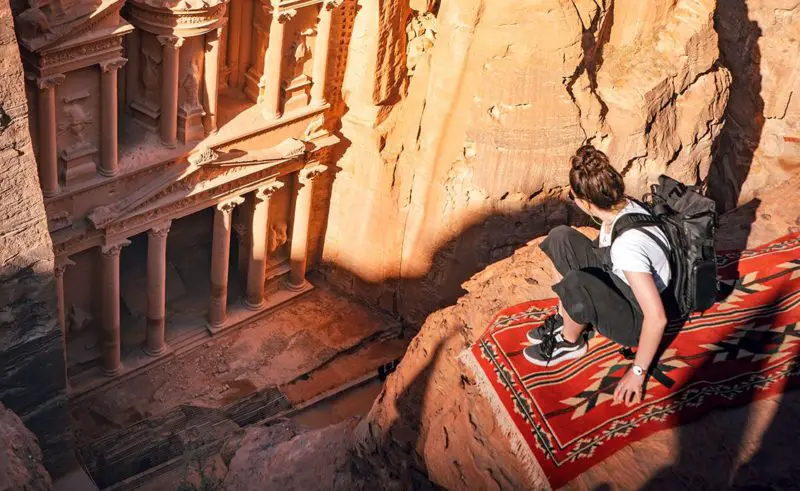

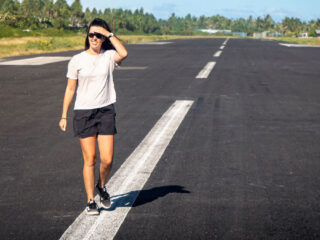

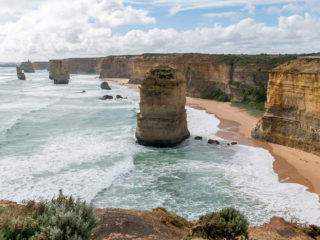
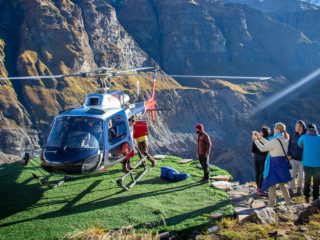

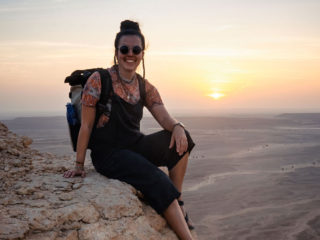
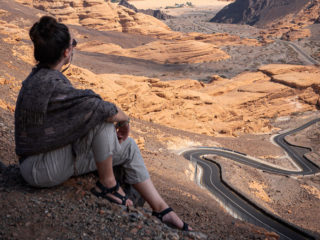
2 comments
Hello,
Thank you for this article that I found because I also want to do this trail.
Can you tell me if you found your guide at the visitor center and what was the price of the service?
Thank you.
Etienne